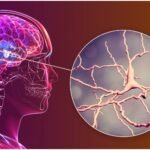At any time of day, paying attention to your surroundings is essential. As we enter the winter season with less daylight, you must be cautious whether strolling late at night on major roads or quiet residential streets.
According to the National Highway Traffic Safety Administration (NHTSA), approximately 75% of pedestrian deaths occur at night, with 26% occurring between 6 p.m. and 9 p.m. Consult a Las Vegas pedestrian accident lawyer today for more information.
Nighttime pedestrian safety tips
Aside from the questionable individuals who prowl the streets, the hazards of late-night walking arise from vehicles that may be speeding dangerously along the road. Although the onus of guilt does not always lie on the pedestrian in the case of an accident, it is critical for their safety that they exercise extreme caution when walking alone at night.
Here are some tips to stay safe.
Wear reflective gear
The walkers’ overall lack of visibility is a primary cause of nighttime pedestrian deaths. However, if they wear luminous apparel in the evening, they will be able to avoid this problem. This greatly aids their efforts to remain safe at night since the light from the automobile grazes the reflective material and reflects on the driver.
Pedestrians seem much brighter than they would have if they had not worn reflective apparel. As a result, it would be advantageous for pedestrians strolling late at night to acquire them.
Walk with a light source.
However, not everyone can afford fluorescent clothes. Fortunately, that is not the only protection that nighttime pedestrians may take. Holding a light source at night may benefit pedestrians when walking, in keeping with the desire to boost visibility.
By carrying a light source, the pedestrian intentionally alerts others on the road that they are present and should proceed with caution.
A light source is not difficult to obtain. Handheld cellular phones often provide such features for consumers to utilize in an emergency. Given the risks, walking at night necessitates this need.
Stay on well-lit pathways.
However, if you do not have reflective clothes or a light source, you must move tactically as a pedestrian at night. Determine whether pathways are well-lit and safe to utilize when you walk to your destination or even before you travel.
This might potentially safeguard you against drivers who may have difficulty seeing at night. Remember that one of your key goals as a pedestrian is to maximize visibility as much as possible, and this is the best method to do it.
Understandably, this is not always the case, so remain alert of your surroundings and on the lookout for any indicators of danger.








